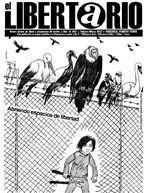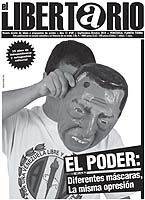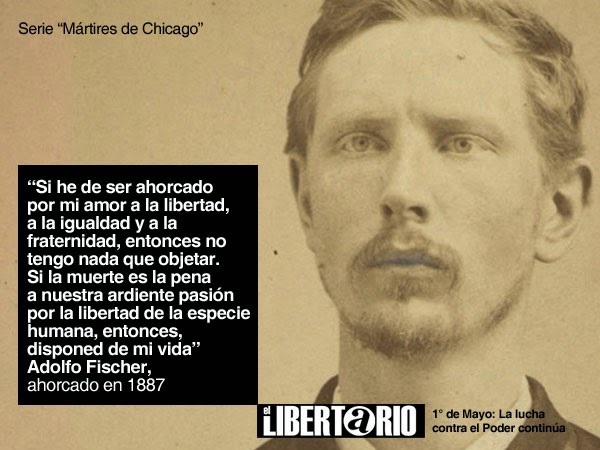Venezuelan Observatory of Social Conflict
Protests
numbers rose 400% in February
18 murders,
2.382 injured and 1.254 imprisoned
The
Venezuelan Observatory of Social Conflict (Observatorio Venezolano de
Conflictividad Social, OVCS) registered in February 2014 at least 2.247
protests. This number is 400.5% higher than in January, when there were
registered 445.
The protests in February represent the highest
number registered in a single month in the last 10 years. The tensions and
conflicts in Venezuela
From the
first week of February, a wave of peaceful protests started in Venezuela
The protests began demanding the right to
citizen safety and the strong complaint for the high crime and violence rates
in the universities. Then the demands started including other civil rights,
such as food access, political participation, respect for the human life,
liberty and personal integrity, and freedom of speech. The number of protests
increased proportionally to the increase in repression by the State.
The most
widely used form of protest in this period was shutting down streets, followed
by demonstrations, marches and ‘cacerolazos’ (beating of empty pots to create
loud noise from inside the homes). The number of people involved was impressive
in all of the street demonstrations.
The
Venezuelan government answered the peaceful demonstration with a systematic
repression, violating human rights and militarizing some cities. This lead to a
total of at least 18 people killed[1], 2.382 injured and 1.254 imprisoned.
The
Bolivarian National Guard (Guardia Nacional Bolivariana, GNB) and the
Bolivarian National Police (Policia Nacional Bolivariana, PNB) were the
security forces who commited most of the violation of the human rights of the
demonstrators. These were followed by the Bolivarian Service of Intelligence
(Servicio Bolivariano de Inteligencia, SEBIN) and the local municipal police
forces. Beside the public force depleted by the State, the demonstrators were
attacked by ‘colectivos’, paramilitary groups composed of pro-government armed
civilians, who act with the permissiveness and complicity of State officials.
These
attacks were ordered and backed by President Nicolás Maduro and by the state
governors who belong to the ruling party, by representatives in the National
Assembly, including its president Diosdado Cabello, as well.
The
repression pattern was characterized by:
a) Joined attacks by the Bolivarian National
Guard (GNB) and the armed colectivos.
b) Attacks to the demonstrators during the
transmission of mandatory presidential broadcastings in radio and television.
c) Most of the protests attacked by the armed
colectivos, people murdered or withn gunshot wounds were reported.
d) The harshest raids took place after 6pm.
e) Systematic employment of toxic substances
and firearms.
f) Cruel, inhumane or degrading treatment of
the imprisoned demonstrators.
g) Torture and sexual abuse of the imprisoned
demonstrators.
h) Arbitrary detentions.
i) Illegal squattings.
j) Criminalization of the protests.
k) Agression to journalists.
l) Persecution of leaders from opposition
parties.
It must be
noted that in the middle of the crisis the President rallied a political act
called Conference for Peace (Conferencia por la Paz Venezuela
The peace
speech did not stand up to the facts. While the President was calling for
dialogue he also ordered the complete militarization of the Táchira state,
suspending even basic rights such as the right to protest peacefully.
Another
relevant aspect and a consequence of the repression was the intesification of
the protests in the last weeks of February. On the other hand, in the middle of
the chaos unleashed in the country, several criminal groups carried on
vandalisim and looting. In the last 4 days of February, the OVCS registered at
least 10 lootings and 25 looting attemps in 4 states.
From the
begining of the term of Nicolás Maduro, the peaceful protests in the streets
have been controled with an disproportionate and undifferentiated use of the
force, particulary when the protests have a political content. It looks as if
the lack of leadership and capacity to resolve the conflicts was compensated
with an increasing use and presence of the military in the streets.
By the time
of this investigation, protests are still reported in the main cities in the
country. We are preoccupied with the call the President did to the colectivos,
community councils and civil unities with military formation to dissolve the
protests. With this measure a confrontation between factions in the civil
population is being promoted. We consider these measures taken by the
venezuelan government as prone to ignite a bigger and wider conflict.
During the
February protests, several human rights NGO’s dedicated to document cases,
denounce abuses, acompany the victims and assist them legally and
psicologically. Here is a list of some of these NGO’s:
Centro de Derechos Humanos de la Universidad Católica Andrés
Bello http://w2.ucab.edu.ve/cddhh.html
Provea http://www.derechos.org.ve/
Instituto Prensa y Sociedad Venezuela (IPYS)
http://www.ipys.org.ve/ipys-venezuela.aspx
OVCS
http://www.observatoriodeconflictos.org.ve/
Conflictove
http://www.conflictove.org.ve/
Amnistía
Internacional Venezuela
Foro Penal
Venezolano http://www.foropenal.com/
Cofavic
http://www.cofavic.org/
This
investigation of tendencies employs as main resource the monitoring of the
situation through national and regional media. Also official sources and NGO’s.
It’s stressed the direct observation as non-participant in some of the studied
phenomena. To acceed to the daily monitoring of the protestswe sugest to
consult www.conflictove.org.ve, Twitter:
@ConflictoVe
We invite
you to visit of site www.observatoriodeconflictos.org.ve
Reach us
at:
medios@observatoriodeconflictos.org.ve
observatoriovcs@gmail.com
Follow us
in Twitter: @OVCSOCIAL
[1] The
Office of the Attoney General of the Republic (Fiscalía General de la
República, FGR) officially reported the death of 18 people. It’s necessary to
clarify that according to the investigation done by the OVCS, only 10 were
demonstrators. The remaining 8, according to the Attorney, were killed by
impacts with objects left after the protests, allegedly used in the
demonstrations.



















































No hay comentarios:
Publicar un comentario
Nos interesa el debate, la confrontación de ideas y el disenso. Pero si tu comentario es sólo para descalificaciones sin argumentos, o mentiras falaces, no será publicado. Hay muchos sitios del gobierno venezolano donde gustosa y rápidamente publican ese tipo de comunicaciones.